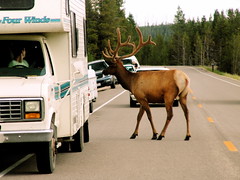Rader is re-tooling AOE to a new brand: GrandLuxe Rail.
I note with some sadness that the former Nationwide wanderings of AOE are now limited to:
Denver-Oakland in 7 days (4 turns per year, Sept-Oct).
Albuquerque to Jackson Hole by way of Barstow, Las Vegas, and SLC (3 1/2 turns per year, April, May and June, and 1 SB trip in August).
Jackson Hole to Seattle: 5 nine day turns, between June and August.
AOE at least got the info right! I notice that Rader describes the Dome car as built by Budd in 1953 for the Southern Pacific Daylights. Hmmm... The last time I checked Mr Pismobum Ainsworth's wonderful DOMEmain site, SP home built 3/4 domes and never had a full dome!
Oh, well...
John Perkowski
I note with some sadness that the former Nationwide wanderings of AOE are now limited to:
Denver-Oakland in 7 days (4 turns per year, Sept-Oct).
Albuquerque to Jackson Hole by way of Barstow, Las Vegas, and SLC (3 1/2 turns per year, April, May and June, and 1 SB trip in August).
Jackson Hole to Seattle: 5 nine day turns, between June and August.
AOE at least got the info right! I notice that Rader describes the Dome car as built by Budd in 1953 for the Southern Pacific Daylights. Hmmm... The last time I checked Mr Pismobum Ainsworth's wonderful DOMEmain site, SP home built 3/4 domes and never had a full dome!
Oh, well...
John Perkowski




